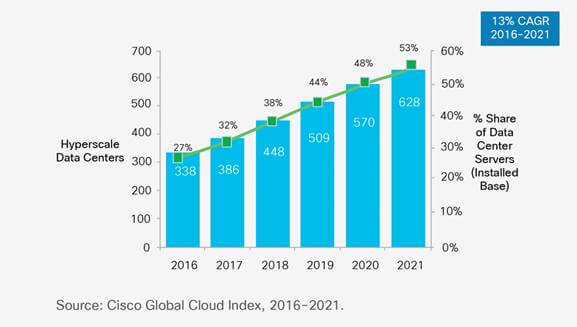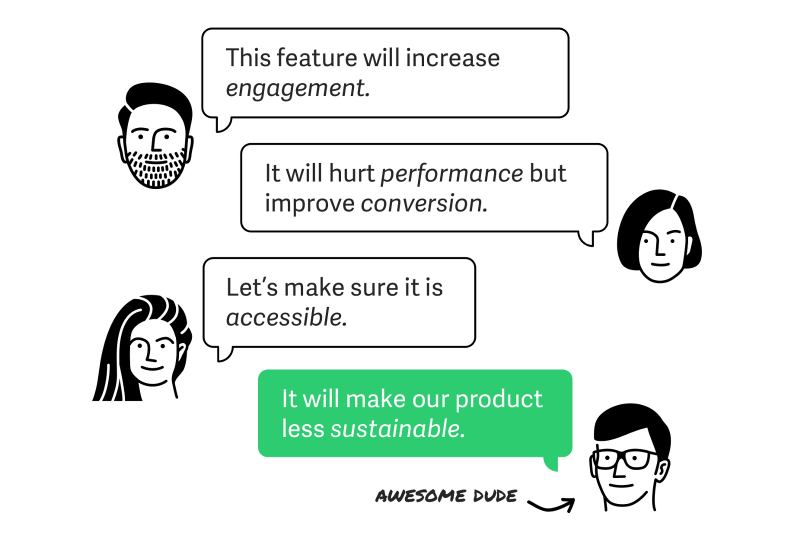Sustainable UX Design
The Internet’s Carbon Footprint

As of April 2019, the internet has collected nearly 4.4 billion users, a number that will only expand as internet access reaches remote and rural communities in developing countries.
The internet is a wonderful thing, a systematic, complex, and ever-expanding network that transformed modern life through a digital platform that connects us all. Its intangible form may fuel the belief that its use comes without a cost to the environment, yet this couldn’t be farther from the truth. In reality, the internet is responsible for 300m tonnes of carbon emissions annually, higher than the collective annual output of the entire aviation sector.
The internet health report released on April 2018 by Mozilla showcased the environmental impact of the web. Data centers alone hold the same carbon footprint as global air travel, and in a time of increased awareness surrounding climate change, this is a cause for concern. Data centers are growing exponentially in size, and are often powered via fossil fuels such as coal and oil.
Some tech corporations, such as Google, have installed environmentally-conscious practices to curb the damaging impact of their business on the environment. Google has been publicly reporting its annual carbon footprint to the CDP (Carbon Disclosure Program) since 2009. Due to the installation of renewable energy and carbon offset programs, the company was able to have a net operational carbon emission of 0 since 2007, putting the company in a position of carbon neutrality.
The Future of Data

The internet is ever-expanding, and as the user population grows and evolves, the environmental cost of the information communication technology industry will only grow with it.
Devices that rely on an internet connection for activities such as video streaming, social networking, and home security require more and more global computing power every year. This demand is increasing annually by nearly 20%, accounting for 3-5% of the world’s total electrical use by the year 2015. A study published in 2017 estimates that the industry could account for ⅕ of global electricity use and 5.5% of total carbon emissions by the year 2025.
The issue extends past consumer products, however, as website data is stored using server farms: buildings that house large collections of computer servers that run 24/7. These data centers are experiencing a state of exponential growth around the world, Ireland, which currently acts as a database for some of the largest global tech companies, is set to grow from 350MW to 1,000MW within the next 5 years. Experts estimate that ⅓ of all kWh generated in Ireland could be used by such data centers by the year 2025.
Data centers are growing exponentially in size, and are often powered via fossil fuels. The amount of data used will only increase with the years, experts say, pointing to the increase of internet users and connected devices that are expected over the next several decades.
Unsustainable UX Design

Data uses energy, downloading, storing, sharing, and retrieving data takes up energy. A website with lots of data will require more energy from users in order to use the website than one with fewer data. Essentially, the more data, the larger the carbon footprint.
Unfortunately, internet trends show the opposite of sustainable practices, the average web page data use has grown from 500kb in 2011 to over 2 megabytes today. Bloated websites are a lose-lose for everyone. Users become frustrated with slow loading speeds, developers and designers experience fewer users as a result, and the environment suffers from wasted energy.

Sustainable practices do not come at a cost to the quality of design, rather the two work symbiotically and one often improves the other. Evidence shows that reducing the data use of a web page leads to lower user abandonment, better conversion, and increased user satisfaction.
Sustainable UX Design

Sustainable design takes into account its responsibility to the environment and utilizes practices that reduce harm to the environment. UX design can help create websites that are as efficient as possible, reducing the number of time users spend looking around by making task completion as easy as possible.
Websites can be made more environmentally friendly by reducing not only the time that it takes users to find what they are looking for but also the amount of data needed to run a site as well. Furthermore, investing in environmentally friendly practice will also improve your user experience, as lighter websites are faster and easier to both load and navigate, resulting in improved user experience.
There are four key areas where UX designers can implement sustainable design practice:
- Findability: creating web pages that focus on making the content as accessible and easy to locate as possible will save energy because users will have to load fewer pages in order to find the desired information
- Performance optimization: The faster your website runs, the less processing power it requires, and the better it is for the environment. Fast page loading speeds will also keep users engaged and increase satisfaction.
- Design and user experience: Mobile-first web design allows your site to be accessible to all users regardless of the hardware they use. in mind can improve your overall design by
- Green hosting: Reduce the carbon footprint of your website by switching to a green web hosting company which ensures that your website is powered by a company that either purchase renewable energy or replaces that which is used by their servers.